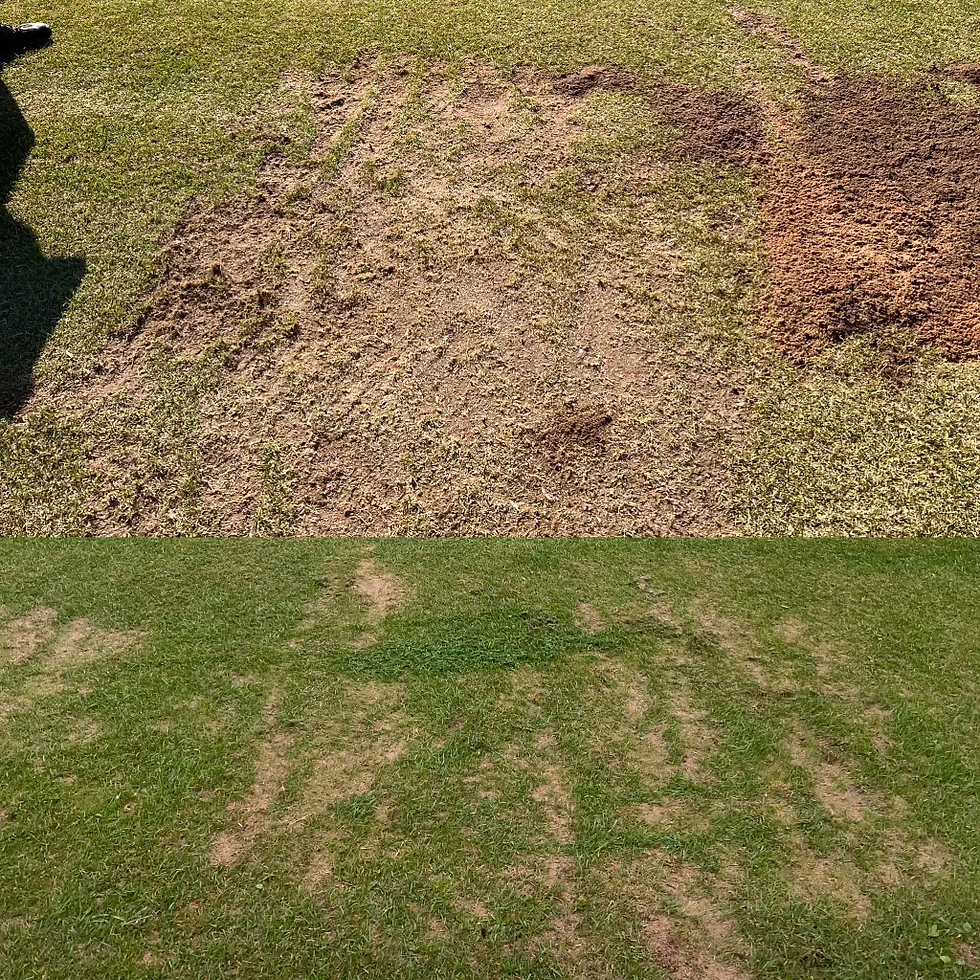Range Tee Opening and a Rainy Reprieve
- Kevin Moores

- Jun 27, 2024
- 3 min read

The range tee opened to much fanfare on June 11th. At over 20,000ft2 the tee deck offers the ability to offer the membership a natural turf hitting area more frequently than our previous tees. We have been moving from front to back on the right half of the tee and are approaching the backside of this first row. After this we will move to the middle portion of the tee. Through diligent overseeding, along with a multitude of other agronomic practices, we are seeing excellent recovery in the first couple of rows of divots.

It is important to be thoughtful with how one warms up/practices on a natural turf tee. Taking lines of divots is much better for recovery than any other way. How well the turf recovers is a major factor in how much time we need to take off the turf to ensure the entire surface isn't spent.
By the time we have moved through each section of the natural grass tee we should be ready to move back to our first position. The mats will still be used on occasion to give the tee a break, or in response to adverse weather conditions, but with those variables accounted for we have a much greater opportunity to warm up on natural turf. The sod is still maturing and will continue to become more dense as the season continues. Besides the seed that is used to fill the divots, we will be overseeding the entire tee a few times over the year with bentgrass and ryegrass to complement the bluegrass that the sod is made up of. To date we have completed one round of overseeding.
We have constructed and seeded a new nursery for greens height turf. New rootzone material was hauled in last year and graded. Record rainfalls kept us from seeding the area last year. Our concern was freshly laid seed washing away or new seedlings being susceptible to damping off, or other fungal pathogens. By the time ground conditions were satisfactory, air temperatures weren't warm enough to make enough progress before things froze up for winter. We are happy to have gotten a premium bentgrass cultivar planted and have seen some germination after 5-6 days. The area will receive special attention as the seed starts to grow. Long term we will clear out another area to grow in a tee/fairway height nursery.

The dry spring continued right to the end as we received under an inch of rain from May 29th-June 23rd. Irrigation efforts were ramped up, particularly at the tail end of that date range as the extended period of dry weather was compounded by record high temperatures for June as humidex levels busted through 40C. Overnight watering was supplemented with additional sprinkler run times. Furthermore, areas that are more susceptible to heat stress had our staff hand watering areas to soak them at a rate and level that is not realistic for sprinkler heads to accomplish. Areas that have a lack of topsoil depth, are more exposed to heat and wind, or are on a ridge, tend to dry out at a level much faster than low lying areas that receive more shade and protection from moisture sucking winds. Wetting agents certainly help, but still require adequate hydration to survive the summer. Thankfully, we have been blessed with some recent rainfall that have given the irrigation pumps, and just as importantly, the staff, a break from the monotony of watering as we can re-allocate our labor resources for the time being.
With July on the horizon our team fills out with the high school students we have hired. This influx of labor helps immensely as we can start making more efficient progress in various areas, particularly the bunkers. We will be venting the greens with a needle tine aeration early in the month. Fungal pathogens are making their presence known as Dollar Spot is starting to come through on fairways (Greens and Tees treated preventatively). Fungicides are used to keep spore populations down and prevent widespread infection and damage. Things are shaping up nicely heading into the prime of the season and starting to approach Oakfield's Club Championships.













コメント